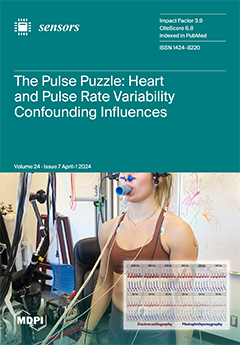Introduction: Amyotrophic lateral sclerosis (ALS) produces alterations in the autonomic nervous system (ANS), which explains the cardiac manifestations observed in patients. The assessment of heart rate variability (HRV) is what best reflects the activity of the ANS on heart rate. The Polar H7
[...] Read more.
Introduction: Amyotrophic lateral sclerosis (ALS) produces alterations in the autonomic nervous system (ANS), which explains the cardiac manifestations observed in patients. The assessment of heart rate variability (HRV) is what best reflects the activity of the ANS on heart rate. The Polar H7 Bluetooth
® device proves to be a non-invasive and much faster technology than existing alternatives for this purpose. Objective: The goal of this study is to determine HRV using Polar H7 Bluetooth technology in ALS patients, comparing the obtained measurements with values from healthy individuals. Method: The sample consisted of 124 participants: 68 diagnosed with ALS and 56 healthy individuals. Using Polar H7 Bluetooth technology and the ELITE HRV application, various HRV measurements were determined for all participants, specifically the HRV index, RMSSD, RMSSD LN, SDNN index, PNN50, LF, HF, LF/HF ratio, HR average, and HF peak frequency. Results: Statistically significant differences were observed between ALS patients and healthy individuals in the HRV index, RMSSD, RMSSD LN, SDNN index, PNN50, HF, and LF, where healthy individuals exhibited higher scores. For the HR average, the ALS group showed a higher value. Values were similar when comparing men and women with ALS, with only a higher HF peak frequency observed in women. Conclusion: The Polar H7 Bluetooth
® device is effective in determining heart rate variability alterations in ALS, being a promising prognostic tool for the disease.
Full article






